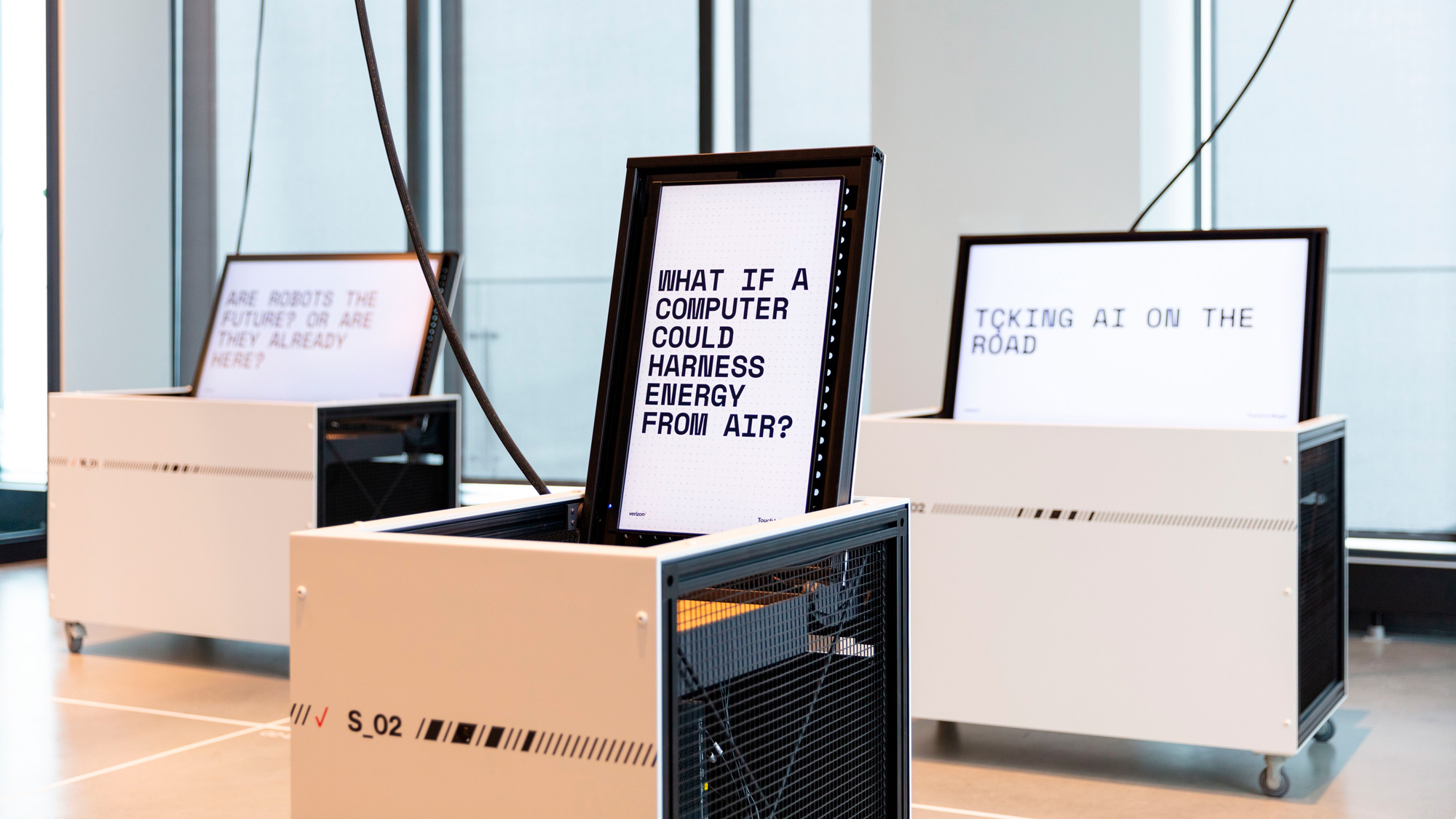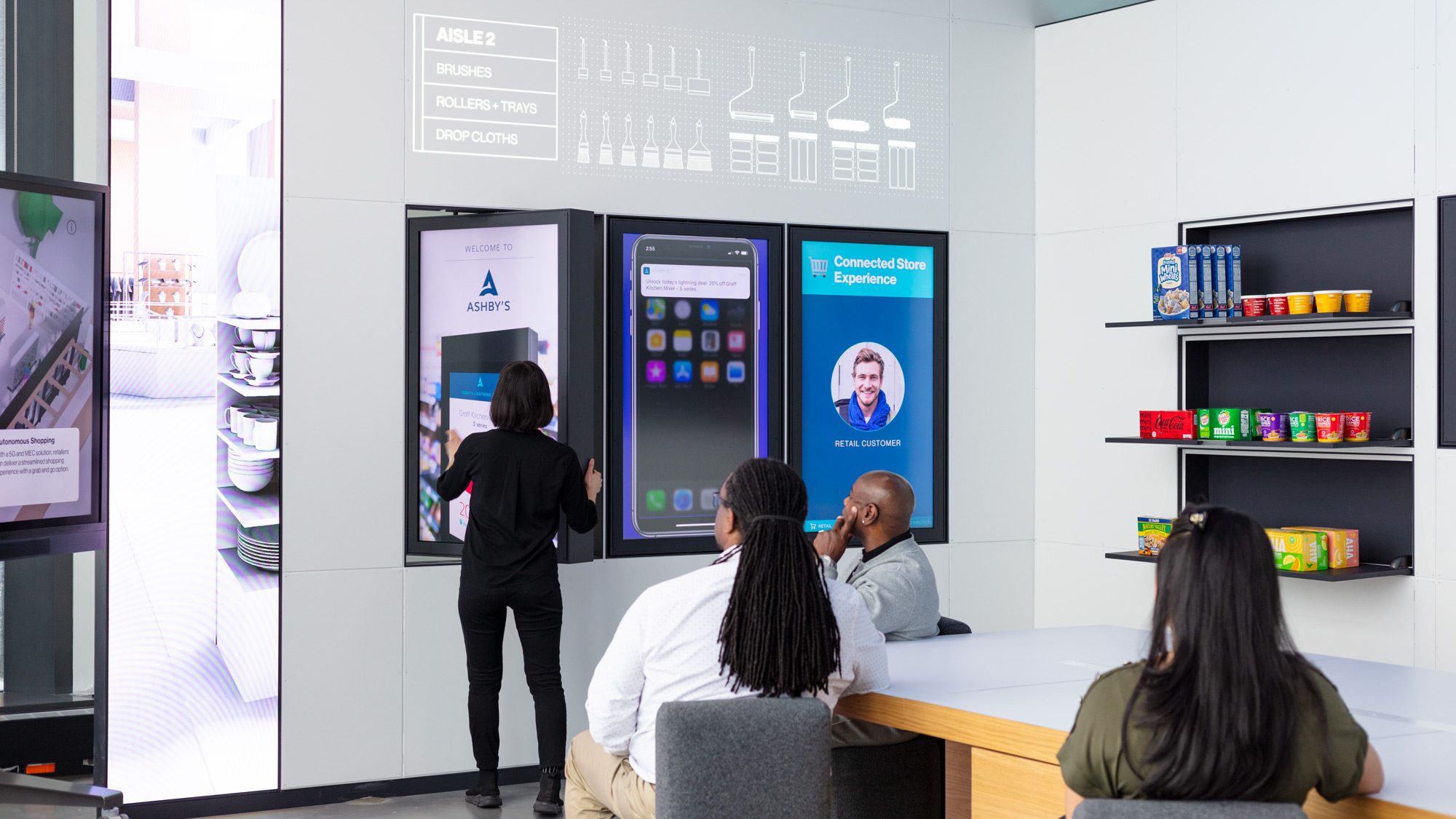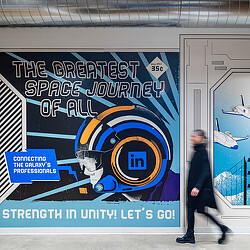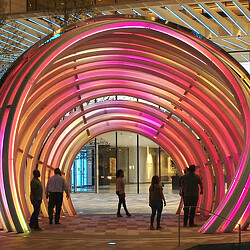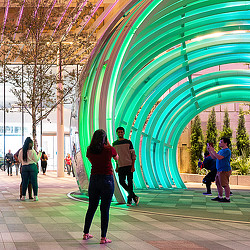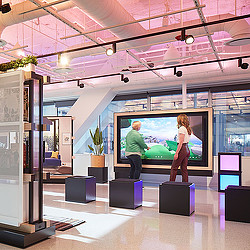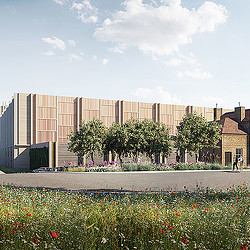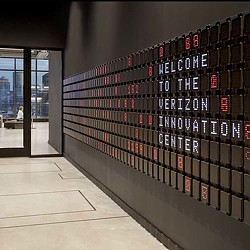Driving Sustainability Through Digital Experience Design
By lowering energy consumption, reducing e-waste, and elevating eco-friendly materials, digital experiences can become an asset in sustainability messaging.
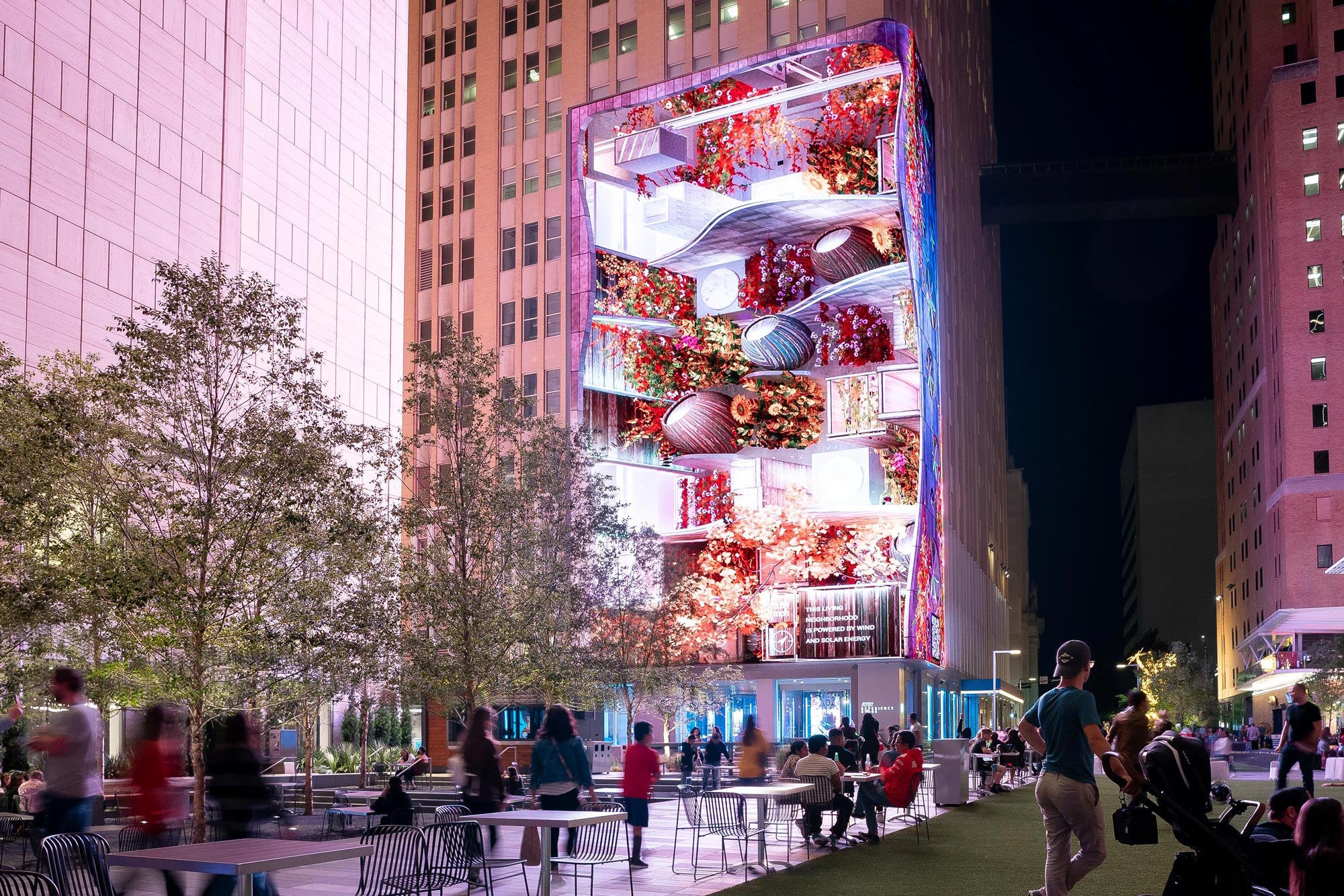
Digital media is often perceived as being at odds with sustainability efforts; however, committing to sustainability early in the digital experience design process can lower energy consumption, reduce e-waste, elevate eco-friendly materials, and even make digital experiences an asset in sustainability messaging.
Gensler’s Digital Experience Design (DXD) Studio connects the physical and the digital with technology-enabled experiences in built spaces. As technology becomes increasingly integrated in architectural design, it’s necessary to approach digital experience design with long-term intention and climate-conscious metrics in mind.
We champion sustainability strategies to ensure that DXD activations are not only unique and effective, but also in alignment with Gensler’s 2030 climate action goals, our clients’ ESG initiatives, and the existential imperative to design for longevity.
Sustainability and innovation must progress hand-in-hand. To codify this process, we developed the Digital Experience Sustainability Toolkit: a strategy framework for sustainable innovation in digital experience design. The result of over two years of research, testing, and synthesis, it offers a roadmap for climate action strategies in our practice and beyond.
Every phase of the design process contains opportunities for incorporating impactful sustainability initiatives. In our Toolkit, we have identified target areas and goal sets to facilitate this essential work from ideation through installation.
In addition to this actionable framework, we identified the following three key action pillars as drivers of DXD’s sustainability impact.
1. Technology
It’s true that certain digital media — specifically light-emitting mediums like Direct View LED — can use a considerable amount of power, but that alone is not a reason to eliminate this type of installation. Technology can be a powerful tool when we start treating it as such early in the design process, and digital media can be an asset to circulate content about sustainability goals and initiatives.
At Verizon’s Boston Innovation Center, visitors are immersed in the company’s cutting-edge technology through multiple interactive touchpoints. Using a kit-of-parts approach, the experience enables endless physical configurations and continuous content customization, ensuring its longevity while remaining fresh and engaging.
Examples of considerations for sustainable uses of technology include:
- Specifying lower carbon materials and hardware.
- Estimating, measuring, and benchmarking energy use.
- Leveraging sensor technology to calibrate experiences to their surroundings and automate interaction modes.
2. Design Integration
To accomplish attractive and sustainable integrations in the built environment, we extensively survey our project sites to identify opportunities for sustainable design decisions. Before launching into concepting, we analyze relevant experiential and environmental variables to ensure we are addressing all the needs of a space and its end users. This includes looking at potential user-journeys and leveraging physical prototyping and environmental simulation software to estimate light conditions, occupancy hours, and audience circulation. We encourage design approaches that allow flexibility in use-case, content, and calibration to keep an experience enjoyable and relevant, thus increasing its lifetime.
In a recent premium airport lounge project, we surpassed the limitations of a space without windows by creating digital portals to wonder and enjoyment. DXD built a generative system to create lush, serene natural compositions displayed across a series of “artificial windows.” The elegantly integrated screens depict different biomes with evolving daylight and weather conditions to encourage relaxation, inspiration, and wanderlust.
While screens may seem like a limiting or imposing medium, an integral step of the DXD process is the careful consideration of how form and content align to enhance the experience of a space.
The process for increasing impact through design integration includes:
- Locating installations for optimal user engagement based on hours of operation and circulation patterns, and programming content modes that adapt to these contexts.
- Minimizing competing light sources and surrounding finishes.
- Employing strategies to increase the longevity of physical installations.
3. User Experience
We prioritize human-centered design to ensure we deliver effective, future-proof, and inclusive experiences. DXD’s climate strategy is rooted in the idea that designs by and for humans can engage users beyond passive screen viewership and inspire powerful shifts in behavior.
A large-scale digital canvas in the vibrant AT&T Discovery District provides an unmatched opportunity to attract thousands of people’s attention daily and showcase content that inspires and informs. AT&T leverages this media wall to showcase a dynamically generated, always-changing display highlighting local, seasonal Texas fauna.
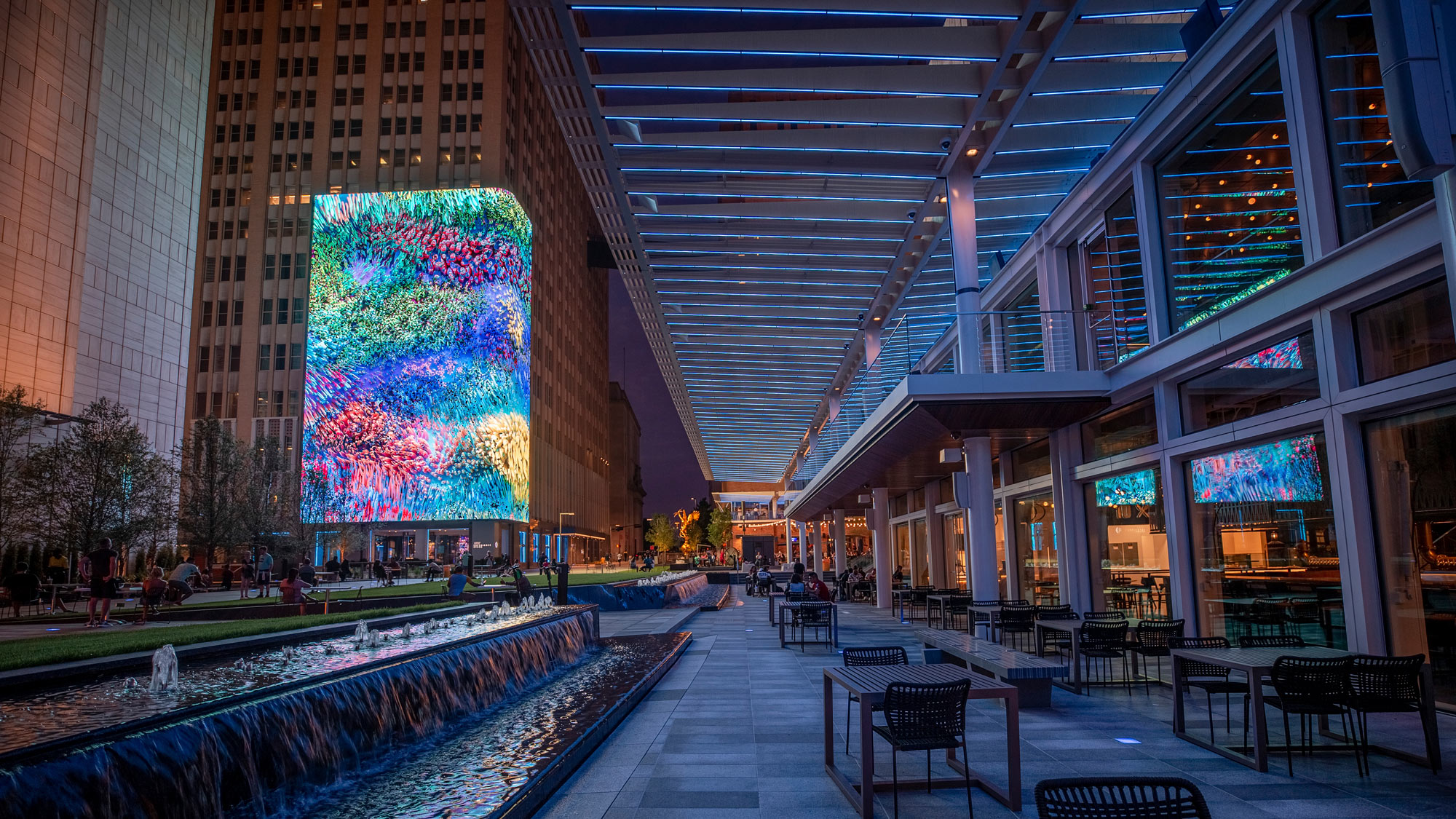
Additionally, the content is scheduled with separate “day” and “night” modes that switch from displaying imagery against light vs dark backgrounds to complement circadian rhythms and respect the surrounding neighborhood. Consequently, running the display with darker content and at a lower brightness during night hours also results in significant energy savings.
This installation inspires visitors with information and imagery that reinforce the brand’s commitment to sustainability, including messaging that the Discovery District is completely powered by wind energy.
We embed our strategies into user experience by:
- Designing for multiple senses to complement the surroundings and enrich the experience.
- Optimizing scale, modes, and complexity to elevate audience experience while minimizing environmental impact.
- Ensuring that the experience stays fresh and relevant long-term.
Implementation
Implementation of these practices is crucial to have lasting impact. As we build a future where technology, compelling human experiences, and sustainability are inevitably linked, environmental considerations cannot be an afterthought in the design process. In fact, when sustainability strategy is prioritized early in the design process, DXD can be a powerful tool for encouraging and supporting green initiatives.
To learn more about DXD’s Sustainability Toolkit or schedule a workshop with your team, contact Mabel Lawrence.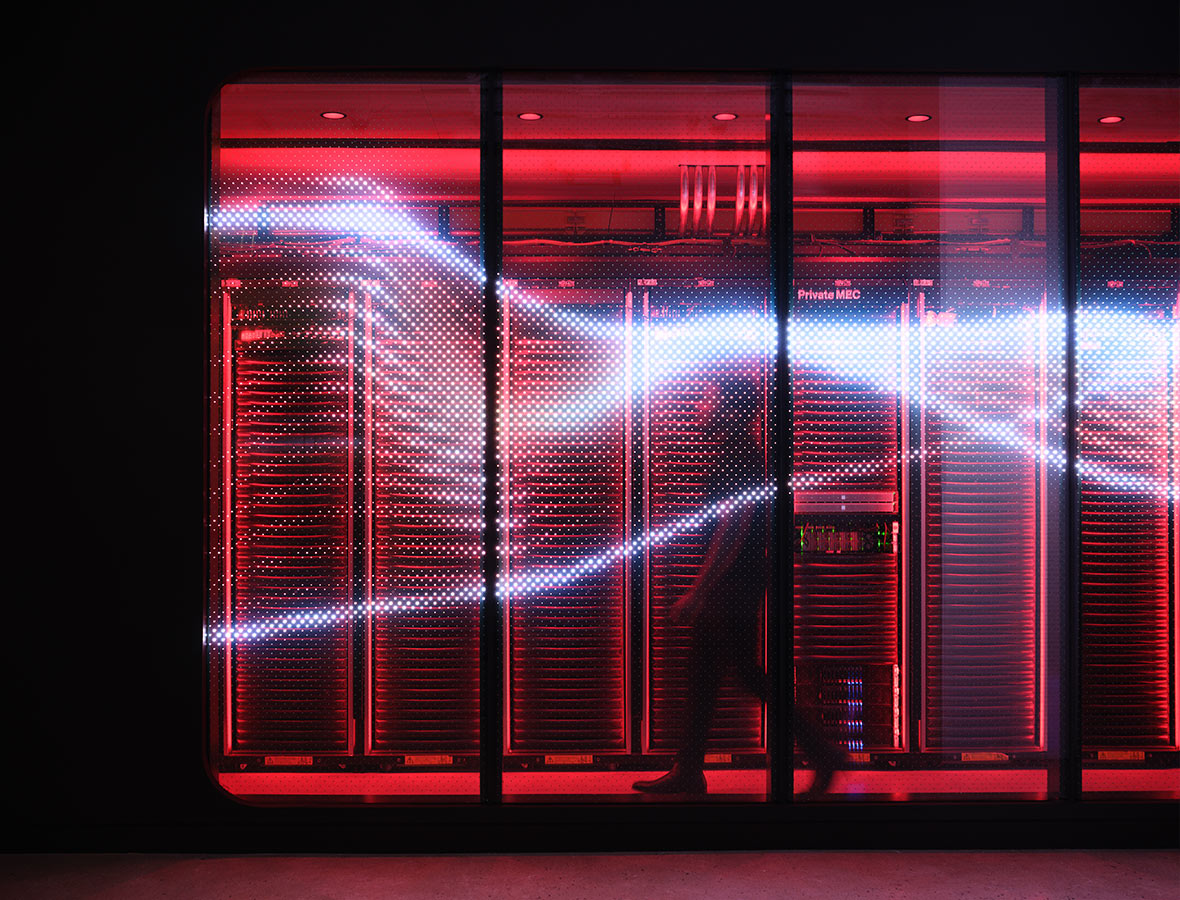
For media inquiries, email .
